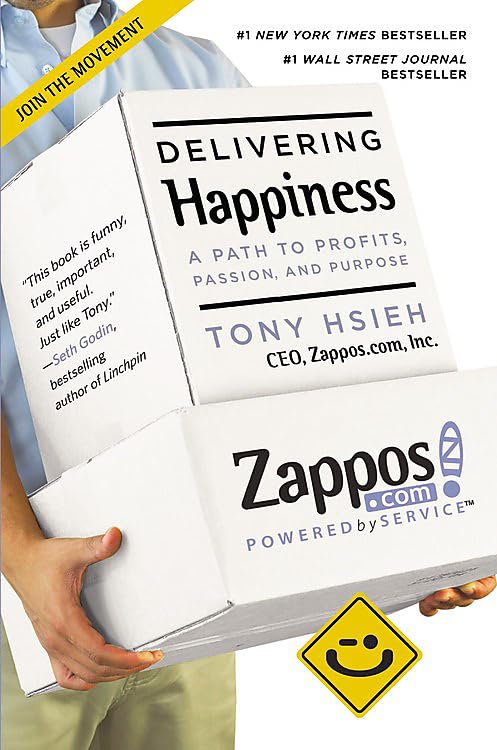Delivering Happiness: A Path to Profits, Passion, and Purpose is a book written by Tony Hsieh, the CEO of Zappos, an online shoe and clothing company. The book is a blend of autobiography, business strategy guide, and self-help book that provides a detailed account of Hsieh’s entrepreneurial journey and the lessons he learned along the way.
The book begins with Hsieh’s early entrepreneurial ventures, from his worm farm to his pizza business in college. It then moves on to his first major success, LinkExchange, an internet advertising cooperative, which he sold to Microsoft for $265 million in 1998. Despite this success, Hsieh felt unfulfilled, leading him to search for a business that could provide both profits and happiness.
This search led Hsieh to invest in Zappos, a struggling online shoe retailer. As CEO, Hsieh transformed Zappos into a thriving business known for its exceptional customer service and unique corporate culture. The company’s commitment to customer satisfaction, employee happiness, and a strong company culture became the pillars of its success, eventually leading to its acquisition by Amazon in 2009 for $1.2 billion.
Hsieh emphasizes the importance of company culture as a key to business success. He argues that a strong, values-driven culture can be a brand’s unique selling proposition. At Zappos, the company culture is defined by a set of ten core values, which include delivering WOW through service, being adventurous and open-minded, and building a positive team and family spirit. These values guide everything from hiring decisions to customer interactions.
The book also explores the concept of delivering happiness to customers and employees. Hsieh believes that businesses can increase productivity, profitability, and customer satisfaction by focusing on happiness. He shares various strategies to achieve this, such as empowering employees, creating a fun and inclusive work environment, and going above and beyond to meet customer needs.
Delivering Happiness also discusses the science of happiness, drawing on research from the field of positive psychology. Hsieh presents a framework for happiness, including perceived control, progress, connectedness, and vision or meaning.
In the book’s final sections, Hsieh challenges readers to find their own path to happiness in both their personal lives and professional careers. He encourages readers to define their own values, pursue their passions, and create businesses that deliver happiness to all stakeholders.
